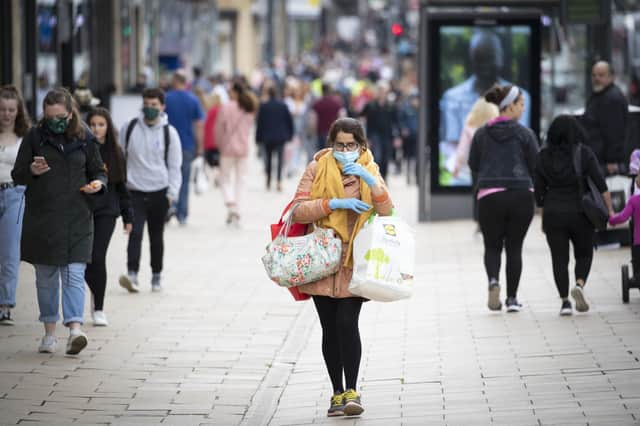One in seven shops in Scotland are lying empty


One in every seven retail premises is currently standing empty as chains and local businesses struggle to manage the changes brought on by the pandemic.
The Scottish vacancy rate increased to 14 per cent in the third quarter of the year, according to the analysis from the Scottish Retail Consortium (SRC), up from 12.9 per cent in the previous three months. The figure is slightly higher than the UK average of 13.2 per cent.
Advertisement
Hide AdAdvertisement
Hide AdExperts said the “upheaval” brought on by the virus and the effect of lockdown, was beginning to “wash through” the retail sector.
The report called for any future closure of non-essential shops to be used only as “an absolute last resort”. The Scottish Government’s new tier system only requires the closure of such premises under the highest level of restrictions.
David Lonsdale, Director of the Scottish Retail Consortium, said: “The shop vacancy rate in Scotland spiked to its highest level in five years in the most recent quarter, as the upheaval wrought by coronavirus begins to wash through. The deterioration was broad based across all types of retail destination.
“One in every seven retail premises now stands empty, a vivid reminder of the consequences of the tumult of the past eight months. Many shops were shuttered for long stretches during this period to aid the fight against the pandemic, and there seems little likelihood of the cumulative lost shop sales of £2.4 billion being recouped.”
He added: “Scotland’s shops and retail destinations will only survive with the ongoing patronage of the public, especially in the run up to the critical Christmas trading period, which is why any closure of so-called ‘non-essential’ shops under the government’s new Covid restrictions strategy must only be an absolute last resort.
“Government support for retail during the pandemic has been substantial. However, with retailers’ revenues continuing to fall short more will be required.”
All types of shopping areas saw an increase in vacancies, however shopping centres have the largest proportion of shuttered shops at 16.8 per cent. On the High Street, vacancies increased to 13.5 per cent over the period, while retail park vacancies increased to 10.4 per cent. However, it remains the location with by far the lowest rate.
Lucy Stainton, head of retail and strategic partnerships at the Local Data Company, which co-authored the report, said: “The sharp increase in the vacancy rate in Q3 is illustrative of the immediate impact the coronavirus pandemic is having on retail and hospitality.
Advertisement
Hide AdAdvertisement
Hide Ad"Shopping centres in particular have struggled, being so exposed to fashion and restaurant operators, as well as having less ‘essential retailing’ to help retain footfall in lockdown periods. Retail parks however should see a reprieve in coming quarters. Whilst the vacancy rate on retail parks is on an upward trajectory, these locations are becoming increasingly popular with consumers who can drive to these sites and readily socially distance in larger format stores. These units then could become more attractive to retailers who are looking to expand and make the most of the availability of space.”